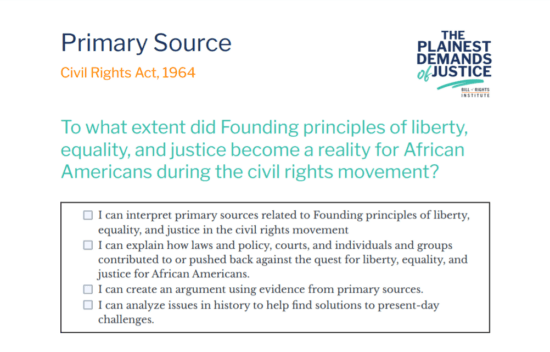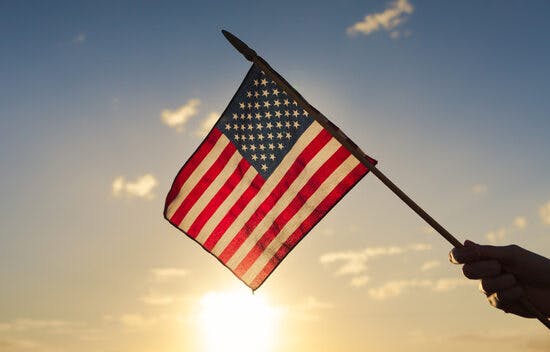



LADOE High School Civics | Unit 4: People of the United States
18 items

Justice for All
Lesson - 9 Activities
Lesson
9 Activities
95 Min
What were the Founders’ concepts of justice, liberty, and rights and where did those concepts came from? How have these ideas changed over time? Use these primary sources to analyze.
95 Min
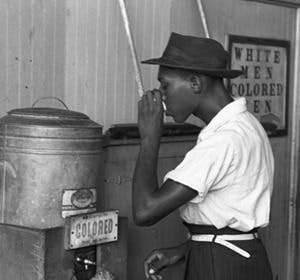
The Civil Rights Movement
Lesson - 15 Activities
Lesson
15 Activities
90 Min
The Civil Rights Movement sought to win the American promise of liberty and equality during the twentieth-century. From the early struggles of the 1940s to the crowning successes of the Civil Rights and Voting Rights Acts that changed the legal status of African-Americans in the United States, the Civil Rights Movement firmly grounded its appeals for liberty and equality in the Constitution and Declaration of Independence. Rather than rejecting an America that discriminated against a particular race, the movement fought for America to fulfill its own universal promise that “all men are created equal.” The Civil Rights Movement worked for American principles within American institutions rather than against them.
90 Min
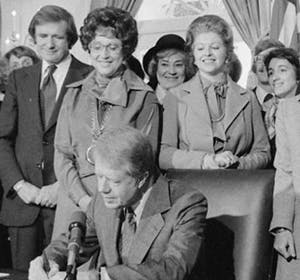
Women’s Rights in the Late 20th Century
Lesson - 9 Activities
Lesson
9 Activities
65 Min
After World War II, women’s struggle for equality achieved a mixed record of success. The women’s rights movement won equal opportunities in higher education and employment relatively quickly in the 1940s and 1950s. The modern concept of women’s equality as “feminism” appeared in the 1960s, led by activists such as Betty Friedan. Some of its victories in the legislative arena were completely inadvertent, while one of its grandest objects and subject of its greatest efforts resulted in defeat. Moreover, the movement was dominated by an intellectual and professional leadership at some distance from ordinary women. Despite the vagaries of the movement, it was remarkably successful in fundamentally changing society and women’s roles as well as attitudes towards women. In this lesson, students will explore the record of successes, and better understand constitutional principles of privacy and due process.
65 Min

The Reconstruction Amendments: Thirteenth Amendment, 1865, Fourteenth Amendment, 1868, and Fifteenth Amendment, 1870
Activity
Activity
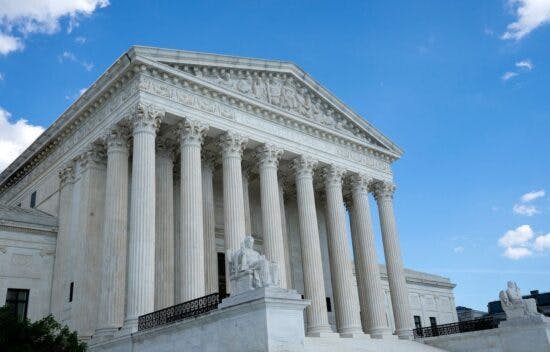
Brown v. Board of Education (1954)
Lesson - 4 Activities
Lesson
4 Activities
Case background and primary source documents concerning the Supreme Court case of Brown v. Board of Education. Dealing with the principle of Equal Protection, this lesson asks students to assess the role played by the Court as the protector of individual rights against the tyranny of the majority.

The Establishment Clause — How Separate Are Church and State?
Lesson - 3 Activities
Lesson
3 Activities
60 Min
The original thirteen states that formed the United States included individuals from a variety of religious traditions. To ensure that the national government respected freedom of belief, freedom of conscience, and freedom of religious practice, the First Amendment prohibited the federal government from either establishing a national church or interfering with existing state religions. Since then the Supreme Court has created various "tests" to determine if government practices violate the Establishment Clause of the First Amendment. This lesson explores the history and principles behind this clause.
60 Min

What Is the Significance of the Free Exercise Clause?
Lesson - 4 Activities
Lesson
4 Activities
55 Min
One of America's most cherished freedoms is the free exercise of religion. In a nation where people of many faiths live side-by-side, the First Amendment's Free Exercise Clause protects individuals from government interference in the practice of their faith. The government cannot target laws at specific religious practices or place undue burdens on its citizens' worship. This lesson explores the free exercise clause and the many questions that arise from its enforcement.
55 Min

How Do Due Process Protections for the Accused Protect Us All?
Lesson - 4 Activities
Lesson
4 Activities
65 Min
The Founders paid close attention to the rights of the accused because they realized that the government had the power both to prosecute and convict. Protections were needed to guard against the government's abuse of these powers. Understanding how the Fourth, Fifth, Sixth and Eighth Amendments operate to guarantee such protection and how they work to ensure both individual liberty and limit government is vital to maintaining free citizenship. This lesson explores these amendments and the protections they provide.
65 Min
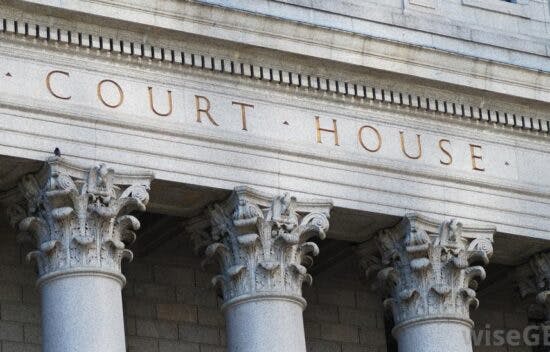
Gideon v. Wainwright (1963)
Lesson - 4 Activities
Lesson
4 Activities
Case background and primary source documents concerning the Supreme Court case of Gideon v. Wainwright. Dealing with whether or not a state must provide a lawyer to the accused, this lesson asks students whether or not they believe the Sixth Amendment guarantees the right to counsel in all cases and whether the government must provide a lawyer to defendants who want one but cannot afford one.

Miranda v. Arizona (1966)
Lesson - 4 Activities
Lesson
4 Activities
Case background and primary source documents concerning the Supreme Court case of Miranda v. Arizona. Dealing with the Fifth and Sixth Amendments and whether or not the accused needs to be advised of their rights upon arrest, this lesson asks students to evaluate the extent to which Miranda is the fulfillment of the legal tradition of the promise against self-incrimination.

Immigration and Citizenship
Curriculum - 3 Lessons
Curriculum
3 Lessons
What do students need to understand about the history of immigration to be informed for it's modern debates? Examine the important story of immigration in the United States by reviewing the nature of immigration and giving students tools to analyze the history of immigration both through the social history and the legal and policy debates from the Founding until the present. With this context in mind, students are better able to engage in the modern debates regarding immigration. Students will understand the factors that led early immigrants to the United States and the challenges they faced upon arrival. They will analyze how American lawmakers viewed immigrants and the evolving nature of immigration policy. Finally, students will use this knowledge to prepare and present their own plan for immigration policies.

The History of Immigration Law in the United States
Lesson - 5 Activities
Lesson
5 Activities
150 Min
What is the background history of immigration policy in the United States? Examine the philosophical origins, legal debates, and legal history from the Founding of the nation to the late 1900s. Give students tools to understand how American lawmakers have viewed immigrants and the reasoning behind the evolving nature of immigration policy.
150 Min

Citizenship and Naturalization in the United States
Lesson - 1 Activities
Lesson
1 Activities
40 Min
What are the steps and requirements involved in becoming a U.S. citizen through naturalization?
40 Min

Essay: Responsibilities of Citizenship
Essay - 1027 Words
Essay
1027 Words
The Founders knew that Americans would need to possess a number of traits and dispositions for the new republic to be successful. Citizens, they believed, must be well-informed, engage in public life, vote, and participate in civil discourse. It also was also necessary that they exercise good judgment, moderation, self-restraint, vigilance, and dedication.

Duties and Responsibilities of U.S. Citizens
Lesson - 1 Activities
Lesson
1 Activities
45 Min
How does applying civic virtues to civic duties and responsibilities support the functioning and values of our democratic society?
45 Min
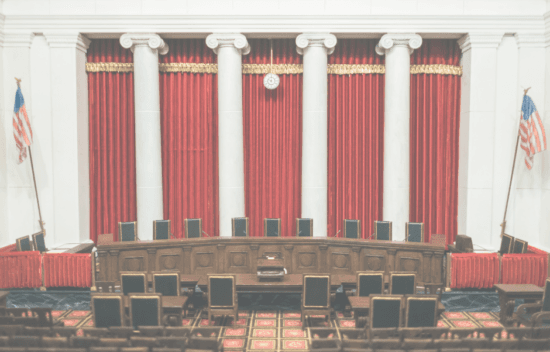
Effects of Supreme Court Decisions
Lesson - 1 Activities
Lesson
1 Activities
45 Min
What political, social, and/or economic effects come from the intended and unintended consequences of Supreme Court decisions?
45 Min
